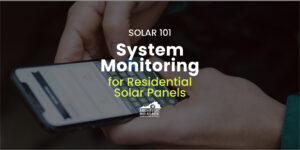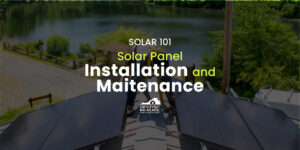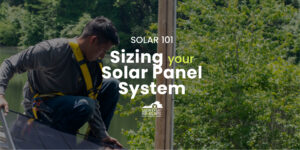Inverters
Inverters
The concept of solar energy generation is pretty straightforward: solar panels collect energy from the sun and convert it into usable electricity for the home. But how do solar systems change the stuff that keeps the world warm and bright into the electricity that makes your TV turn on each evening?
That’s where inverters come in. After the sun hits a solar panel, knocking loose its electrons and creating an electrical current, inverters change that current into the type of electricity your home can use. It converts it from direct current (DC) electricity, which is what solar panels produce, to alternating current (AC) electricity. Without this conversion, the many appliances in your home that need AC electricity would not be able to function.
Types of Inverters
Inverters are a crucial component of the solar process, which means it is especially important to select the right type of inverter for your system. There are three main types of solar inverters: string inverters, microinverters, and power optimizers.
String inverters work like a string of Christmas lights: the solar panels are strung up all together, or in groups, to one centralized inverter. The inverter collects energy from all of the solar panels and converts that energy from DC to AC. It is an inexpensive, standard type of inverter, but it has no way to monitor each panel individually. They are best for systems that are unshaded and have all panels facing the same direction, where you do not necessarily need to know the status of each individual panel.
Systems using micorinverters connect a small inverter to each individual panel, and each of these microinverters converts the energy produced by the panel it is connected to from DC to AC. They allow each panel to operate at full capacity, regardless of the performance of other panels in the system, and monitor each panel individually. They are a more expensive option, but work well on systems that experience some shading or have panels facing different directions.
Power optimizers work together with a single centralized inverter, like a string inverter. Each panel has a power optimizer connected to it. These optimize the energy each panel produces, ensuring that panels are reaching peak production, then send this energy to the inverter to be converted into AC electricity. Similarly to microinverters, they provide direct monitoring of each panel, but they are less expensive because the conversion from DC to AC takes place in a single centralized inverter.
Choosing the Right Inverter
Each of these inverters can be an excellent fit when paired with the right system. String inverters are ideal for standard systems that have panels all facing the same direction and do not experience shading, since these systems do not necessarily need individual monitoring for each panel. Microinverters and power optimizers work well for systems that have panels facing different directions or experiencing shade, as they ensure that each individual panel is reaching peak production even if other panels in the system are shaded.
When building a solar energy system, we want to pair it with the most effective inverter for its unique composition. Through various partnerships with renewable energy technology manufacturers, we have access to string inverters, microinverters, and power optimizers. Additionally, we connect homeowners to monitoring software that allows them to see how their system is working in real time. Selecting the right inverter allows homeowners to maximize their solar system’s production and their own ROI.
Do you want to learn more about solar? Subscribe to our Solar 101 blog series by entering your email address below, or click the link to view our corresponding Solar 101 videos!

